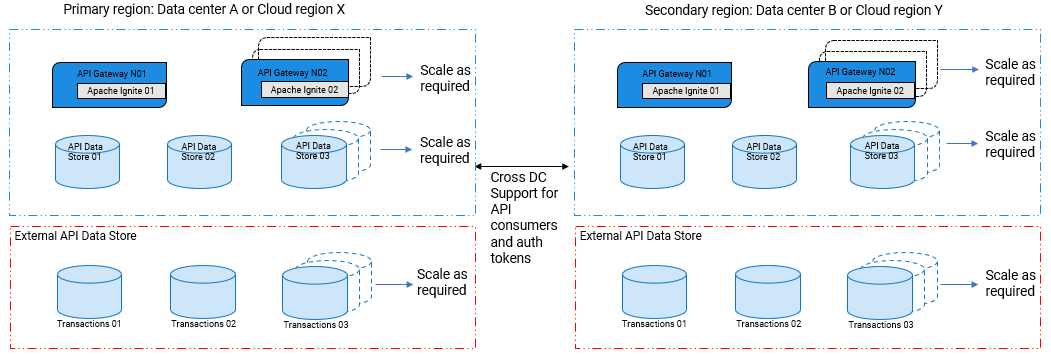Keypoints about High Availability and Fault Tolerance (HAFT) solution
The architecture of HAFT is as follows:
The keypoints about HAFT solution is as follows:

Use this set up, if the RTO is highly demanding, which ranges from few seconds or minutes.

Each data center or the cloud region hosts an independent or isolated cluster of its own.

HAFT solution can be set up using
Hot standby mode or
Active-Active mode. The following table explains the difference between both the modes.
Failover Mode | RTO | RPO | Description |
Hot standby mode | few seconds or minutes (time taken to switch the load balancer). | less than 5 seconds. |  You can have only two data centers. Out of which only the primary data center serves the client request. Hence, this approach is cost effective compared to Active-Active mode. |
Active-Active mode | no down time. | less than 5 seconds. |  You can have N (Min 3) number of data centers and all the data centers serve the client request. Hence, the cost is more compared to Hot standby mode. |

API assets should be synchronized across the data center through CI-CD deployments.

Cross-DC federation support offered by API Gateway is limited to API consumers and auth tokens.

API transactions are local to the cluster where the traffic is served and not aggregated. For aggregated transactions, use a centralized API Data Store.

